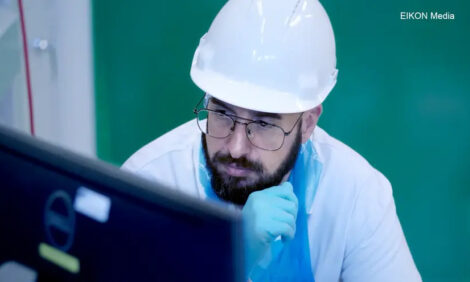



To treat or not to treat, that is the question
Is treating finishing pigs for swine respiratory disease the right decision?Dr. Dave Baumert, senior technical services veterinarian with Zoetis Pork, spoke with The Pig Site’s Sarah Mikesell about the use or non-use of treatment therapies for swine respiratory disease.
Dr. Baumert, can you clarify what our focus is today relative to the producer or veterinarian's decision not to treat finishing pigs for swine respiratory disease?
In terms of non-use, what we're not talking about today is a production system where the pigs are being raised in an antibiotic free (ABF) or no antibiotic ever (NAE) type program. Pigs that need treatment are still treated. They're simply removed from the premium program.
What I do want to talk about specifically today is the situation where a producer intentionally or sometimes subconsciously decides not to medicate pigs when, in reality, there could be a benefit to using antibiotic therapy in their finishing pigs.
Why might producers make the decision to not provide antibiotic therapy, especially for finisher pigs?
In general, there are three scenarios where a producer might inadvertently decide to have a non-use program.
- Producers are not able to identify the pigs that would benefit from therapy
- There is a limited amount of skilled labor available to do the treatments
- Not fully understanding the cost of treatment versus non-treatment
Dave, let's talk about each of those scenarios in a little bit more depth, starting with failure to identify pigs in need of treatment. How can producers overcome that challenge?
In a typical commercial finisher operation, there are two disease issues that pigs could generally benefit from antibiotic therapy – lameness and respiratory disease.
The important thing is that in both of those cases early treatment results in much better outcomes than later treatment within the disease course. In terms of respiratory disease specifically, we are much better off if we can treat those pigs when they're just starting to look a little bit lethargic or when those pigs are breathing just a little heavier than their pen mates.
On the other hand, if we wait until the pigs are coughing severely or thumping hard because they were not identified early, our treatment outcomes are much poorer. A training program to help producers or animal caregivers identify pigs in need of therapy sooner in the stage of disease would be extremely helpful.
Zoetis has an Individual Pig Care program which is also known as the ABC Pig Care program. Zoetis trains producers and caregivers on how to identify pigs earlier in the course of disease, so that when pigs are treated with an appropriate antibiotic, those pigs will recover with a much better success rate.1-2
How does labor impact the decision to treat or not treat?
Labor shortages, specifically the shortage of skilled labor, is a challenge in the swine industry. Without skilled labor, we physically don't have the people available to treat pigs even if we could identify them. Being able to have skilled labor on the farm to not only monitor pigs' daily progress but to treat them when needed is important.
Because it is scarce, labor comes with a cost. If we have a product such as EXCENEL® RTU EZ (ceftiofur hydrochloride) Sterile Suspension, which is ready-to-use and does not require extensive mixing or a combination of ingredients, that type of product in the hands of our labor will be able to treat pigs more promptly and more effectively. In other words, it will actually decrease the cost of treatment, even in the face of a labor shortage.
From an economic standpoint, how should producers think about the cost of treatment versus non-treatment?
The cost of treatment – the simplest part of that is the cost of the product being used. So, for something as simple as EXCENEL RTU EZ, it’s simply the cost of six mL to treat a 200 lb. pig per day.
Another cost, as we discussed earlier, that goes with treatment therapies is labor. Anything we can do to ease the amount of time or effort to administer a product reduces the cost of treatment.
The other cost probably most misunderstood is what the actual cost of non-treatment is as it relates to performance. That's where the big dollars really start to add up.
So how do performance outcomes impact this decision and the economics?
The decision to have an active treatment program versus a non-use program is often based on a misunderstanding of the cost of performance. With EXCENEL RTU EZ, we have an approved product for the control of four major swine disease pathogens. Those being Actinobacillus pleuropneumoniae (APP), Pasteurella multocida, Streptococcus suis and Salmonella choleraesuis.
In a recent APP challenge study, pigs that had received EXCENEL RTU EZ had an 81% reduction in mortality and an 84% reduction in lung lesions compared to their non-treated cohorts.3
If we were to choose a non-use program rather than an effective antibiotic use program, it would quickly become obvious that a non-use program where we give up a potential opportunity to significantly improve mortality and lung lesion rates would be far more expensive than an actual use program.
What's the most important thing for swine producers to take away?
When we look at the reasons for non-use and examine each of those, it becomes intuitively obvious that a non-use program is just not sustainable in modern pork production. When we have tools like EXCENEL RTU EZ at our disposal, we see that this is a reliable, easy-to-use product that will improve swine welfare while increasing both swine health and production.
Even in the face of labor shortages, the fact that EXCENEL RTU EZ is ready-to-use means we don’t need to spend an extended amount of time mixing, shaking and preparing the product. That makes the product easier and more efficient to use on the farm and thereby helps control our costs, making a use program much more effective than a non-use program.4
IMPORTANT SAFETY INFORMATION: People with known hypersensitivity to penicillin or cephalosporins should avoid exposure to EXCENEL RTU EZ. Do not use in swine found to be hypersensitive. Withdraw 6 days prior to slaughter when injection site volumes are greater than 5 mL up to 15 mL per injection site and 4 days prior to slaughter when injection site volumes are less than or equal to 5 mL per injection site. See full Prescribing Information at Excenelpork.com/PI.
1 Pantoja L, Kuhn M, Farrand E, et al. Impact of a Husbandry Education Program on nursery pig mortality, productivity, and treatment cost. Journal of Swine Health and Production [serial online]. 2013;21 (4):188-194. Available from: CAB Abstracts, Ipswich, MA. Accessed May 1, 2018.
2 Pineiro C, Morales J, Doncecchi P, et al. Individual Pig Care program improves productive performance and animal health in nursery-growing pigs. Journal of Swine Health and Production [serial online]. 2014;22 (6):296-299. Available from: CAB Abstracts, Ipswich, MA. Accessed August 1, 2018.
3 Bowersock, T. L., Meeuwse, D. M., Kausche, F. M., Lucas, M. J., Bryson, W. L. and Dame, K.J. Efficacy of ceftiofur crystalline free acid and ceftiofur hydrochloride administered intramuscularly in swine inoculated with Actinobacillus pleuropneumoniae. Pharmacia Animal Health. 2001.
4 Data on file, Study Document No. ZRD-PSC-004402, Zoetis Inc.
All trademarks are the property of Zoetis Services LLC or a related company or a licensor unless otherwise noted. © 2024 Zoetis Services LLC. All rights reserved. EXC-00083








